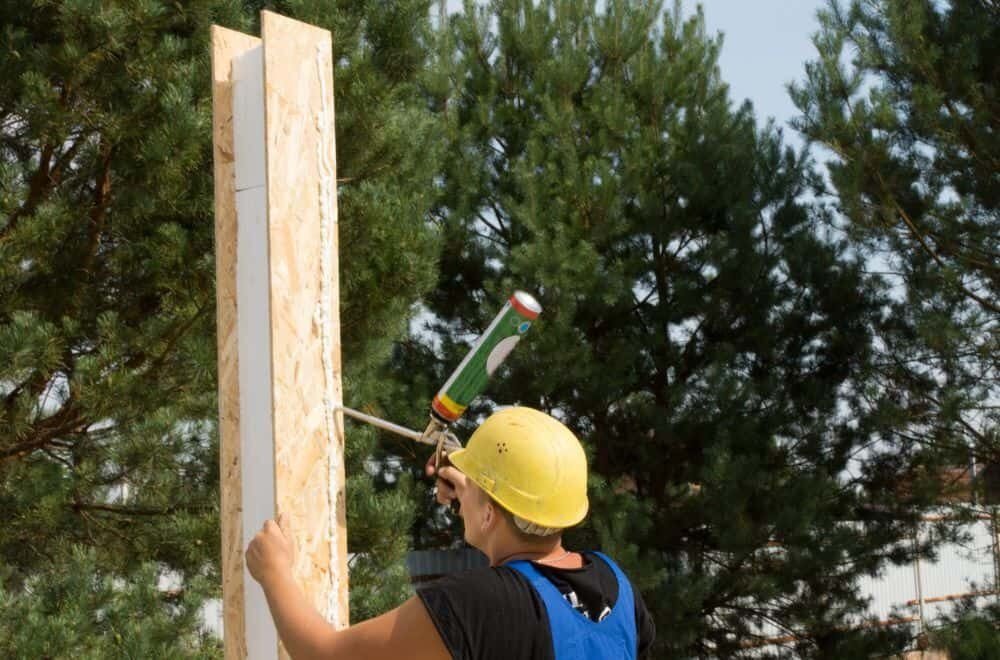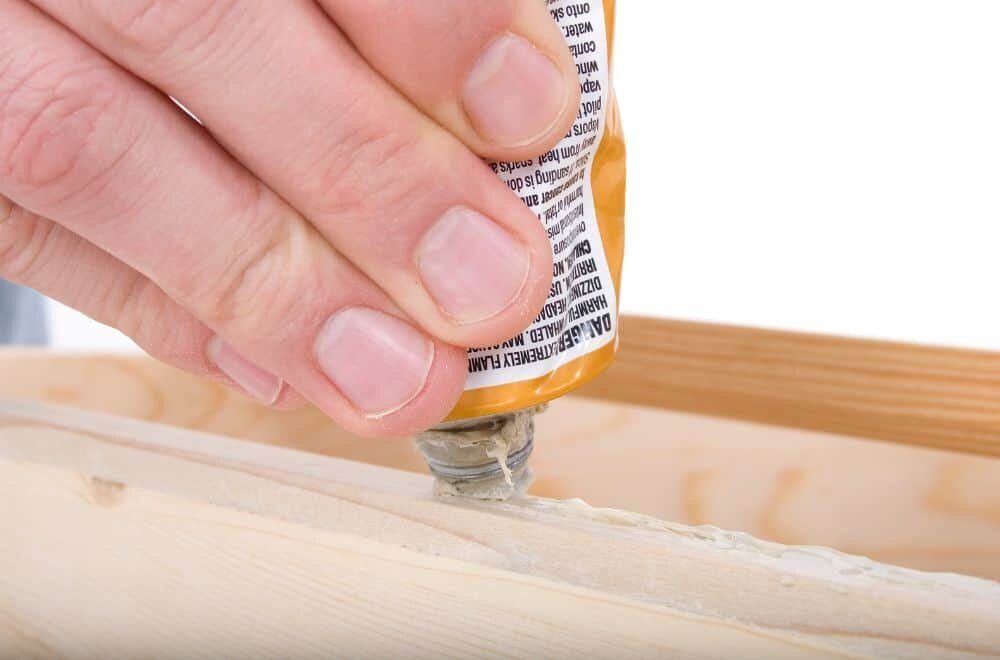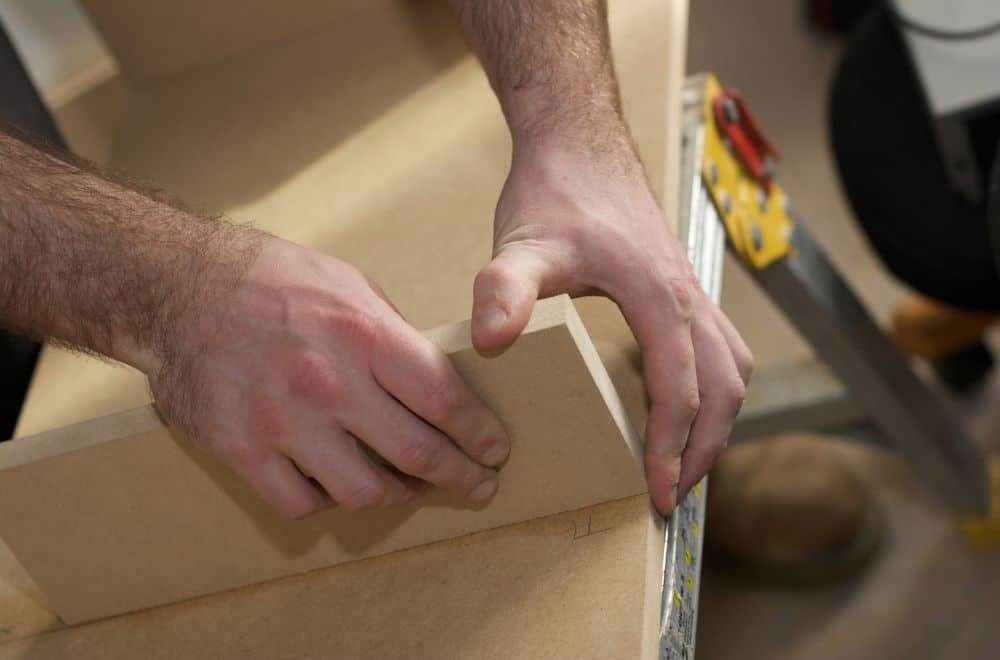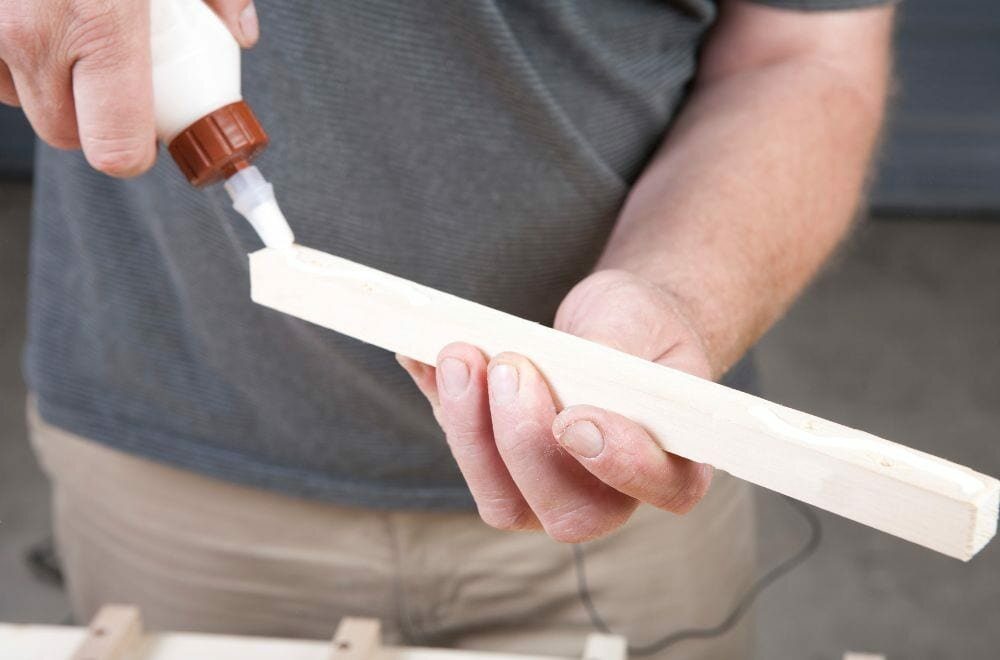Are you wondering what adhesive to use when bonding wood to PVC board? It can be challenging to find the right adhesive for this task, especially if you’re not familiar with the materials. However, with the right information, you can easily choose the right adhesive for your project.
When bonding wood to PVC board, it’s essential to consider the strength and durability of the adhesive. You want an adhesive that can withstand the elements and hold up over time. Additionally, you want an adhesive that can bond the two materials together effectively. In this article, we’ll explore some of the best adhesives for bonding wood to PVC board, so you can choose the right one for your project.
Understanding Wood and PVC Board
When it comes to bonding wood to PVC board, it’s important to understand the characteristics of each material. This will help you choose the right adhesive for the job and achieve a strong and lasting bond.
Characteristics of Wood
Wood is a natural material that comes in many different types and grades. Some common types of wood used in construction and woodworking include pine, oak, maple, and cherry. Each type of wood has its own unique characteristics, such as color, grain pattern, hardness, and density.
One important thing to keep in mind when working with wood is that it can expand and contract with changes in temperature and humidity. This can cause the wood to warp, crack, or split over time if it’s not properly secured or treated.
Characteristics of PVC Board
PVC board, also known as PVC foam board or expanded PVC, is a lightweight and durable plastic material. It’s often used in signage, displays, and other applications where a smooth and rigid surface is needed.
PVC board is resistant to moisture, chemicals, and UV radiation, making it a great choice for outdoor use. It’s also easy to cut, shape, and drill, which makes it a versatile material for a variety of projects.
One thing to keep in mind when working with PVC board is that it can be brittle and prone to cracking if it’s not handled carefully. It’s also important to choose an adhesive that’s compatible with PVC and won’t damage or weaken the material over time.
Understanding the characteristics of wood and PVC board is the first step in choosing the right adhesive for your project. By selecting an adhesive that’s compatible with both materials and provides a strong and lasting bond, you can ensure that your finished product will be sturdy and reliable.
Types of Adhesives

When it comes to bonding wood to PVC board, there are several types of adhesives to choose from. Each type of adhesive has its own unique properties and is suitable for different applications. In this section, we’ll take a closer look at three types of adhesives that are commonly used for bonding wood to PVC board: Epoxy Resin, Polyurethane Adhesive, and Cyanoacrylate Adhesive.
Epoxy Resin
Epoxy resin is a two-part adhesive that consists of a resin and a hardener. When mixed together, the two parts chemically react to form a strong, durable bond. Epoxy resin is an excellent choice for bonding wood to PVC board because it is waterproof, heat-resistant, and can withstand exposure to UV rays. It is also a good choice for bonding dissimilar materials, such as wood and plastic.
To use epoxy resin, you will need to mix the two parts together according to the manufacturer’s instructions. Once mixed, the adhesive will begin to cure, so you will need to work quickly to apply it to the surfaces you want to bond. Epoxy resin has a long curing time, so you will need to allow plenty of time for it to dry completely before using the bonded materials.
Polyurethane Adhesive
Polyurethane adhesive is a one-part adhesive that cures by reacting with moisture in the air. It forms a strong, flexible bond that is resistant to water, heat, and chemicals. Polyurethane adhesive is a good choice for bonding wood to PVC board because it can fill gaps and is suitable for use on porous and non-porous surfaces.
To use polyurethane adhesive, you will need to apply it to one of the surfaces you want to bond. Then, press the two surfaces together and hold them in place until the adhesive dries. Polyurethane adhesive has a relatively short working time, so you will need to work quickly to apply it before it begins to cure.
Cyanoacrylate Adhesive
Cyanoacrylate adhesive, also known as super glue, is a fast-drying adhesive that forms a strong, permanent bond. It is suitable for use on a wide range of materials, including wood and PVC board. Cyanoacrylate adhesive is a good choice for bonding small pieces of wood to PVC board, or for repairing small cracks or chips in PVC board.
To use cyanoacrylate adhesive, you will need to apply a small amount to one of the surfaces you want to bond. Then, press the two surfaces together and hold them in place until the adhesive dries. Cyanoacrylate adhesive dries very quickly, so you will need to work quickly to apply it before it sets.
In summary, there are several types of adhesives that can be used to bond wood to PVC board. Epoxy resin, polyurethane adhesive, and cyanoacrylate adhesive are all good choices, depending on the application.
Choosing the Right Adhesive

When bonding wood to PVC board, choosing the right adhesive is crucial to ensure a strong and durable bond. With so many adhesive options available, it can be overwhelming to determine which one is the best fit for your project. Here are some factors to consider and common mistakes to avoid when choosing the right adhesive for your needs.
Factors to Consider
- Material compatibility: Not all adhesives are compatible with all materials. Make sure the adhesive you choose is designed for bonding wood to PVC board. Check the manufacturer’s specifications to ensure compatibility.
- Bond strength: Consider the strength of the bond you need. Some adhesives are stronger than others and may be better suited for heavy-duty applications.
- Application method: Consider the application method of the adhesive. Some adhesives require special tools or equipment, while others can be applied with a simple brush or roller.
- Drying time: Consider the drying time of the adhesive. Some adhesives require more time to dry than others, which can impact your project timeline.
Common Mistakes
- Using the wrong adhesive: Using an adhesive that is not designed for bonding wood to PVC board can result in a weak bond that may not hold up over time.
- Improper surface preparation: Proper surface preparation is essential for a strong bond. Make sure both the wood and PVC board surfaces are clean, dry, and free of any debris before applying the adhesive.
- Applying too much or too little adhesive: Applying too much adhesive can result in a messy and uneven bond, while applying too little adhesive can result in a weak bond that may not hold up over time. Follow the manufacturer’s instructions for proper application.
- Rushing the drying process: Rushing the drying process can result in a weak bond. Allow the adhesive to dry completely before handling or applying any stress to the bond.
By considering these factors and avoiding these common mistakes, you can choose the right adhesive for your project and ensure a strong and durable bond between your wood and PVC board.
Application Process

Preparation
Before applying any adhesive to bond wood to PVC board, it’s important to prepare the surfaces properly. First, make sure that both the wood and PVC board are clean and free of any debris, dust, or oil that may prevent adequate adhesion. You can clean the surfaces with a damp cloth or use a solvent-based cleaner for tougher stains.
Next, rough up the surfaces to be bonded. Sand the PVC board with a fine-grit sandpaper to create a rough surface that will allow the adhesive to grip better. Sand the wood in the same manner, making sure to remove any splinters or rough spots that may interfere with the bond.
Application
When applying the adhesive, use a continuous or spot bead depending on the size of the surfaces being bonded. Apply the adhesive to the PVC board first, then press the wood onto the adhesive. Make sure that the surfaces are aligned correctly before the adhesive sets.
For bonding wood to PVC board, there are a few adhesive options available. Polyurethane and epoxy glues are popular choices for larger projects, while superglues work well for smaller projects. E6000 adhesive is another option that can provide a strong bond.
Curing Time
After applying the adhesive, it’s important to allow sufficient curing time for the bond to set properly. The curing time will depend on the type of adhesive used, as well as the temperature and humidity of the environment. Check the manufacturer’s instructions for specific curing times.
In general, it’s best to allow the adhesive to cure for at least 24 hours before putting any stress on the bond. Avoid moving or disturbing the bonded surfaces during this time to ensure a strong and durable bond between the wood and PVC board.
Safety Measures

When working with adhesives, it is important to take proper safety measures to avoid any accidents or injuries. Here are some tips to keep in mind:
Wear Protective Gear
Always wear protective gear such as gloves, goggles, and a mask to avoid any contact with the adhesive or fumes. Some adhesives can cause skin irritation or respiratory problems if inhaled.
Work in a Well-Ventilated Area
Make sure to work in a well-ventilated area to avoid inhaling any toxic fumes. Open windows and doors or use a fan to increase airflow in the workspace.
Follow Manufacturer’s Instructions
Read and follow the manufacturer’s instructions carefully before using any adhesive. Some adhesives require specific application techniques or curing times, and failure to follow instructions can result in a weak bond or other issues.
Store Adhesives Properly
Store adhesives in a cool, dry place away from any heat sources or direct sunlight. Keep them out of reach of children and pets.
Dispose of Adhesives Properly
Dispose of any leftover adhesive or empty containers properly according to local regulations. Do not pour adhesives down the drain or throw them in the trash.
By following these safety measures, you can ensure a safe and successful bonding process when working with wood and PVC materials.
Maintenance and Care
Once you have successfully bonded wood to PVC board, it is important to maintain and care for the joint to ensure its longevity. Here are some tips to help you keep your bond strong:
Avoid Excessive Moisture
PVC board is resistant to moisture, but wood is not. Excessive exposure to moisture can cause the wood to swell and weaken the bond. To avoid this, try to keep the joint as dry as possible. If the joint is exposed to moisture, wipe it dry immediately.
Clean Regularly
Dirt, dust, and other debris can accumulate on the joint over time, which can weaken the bond. To prevent this, clean the joint regularly with a damp cloth. Avoid using harsh chemicals or abrasive cleaners, as they can damage the joint.
Check for Damage
Regularly inspect the joint for any signs of damage, such as cracks or separation. If you notice any damage, repair it as soon as possible to prevent it from getting worse.
Avoid Excessive Weight
While a properly bonded joint can be strong, it is important to avoid putting excessive weight or pressure on it. This can cause the joint to weaken or break over time. If you need to support heavy objects, consider using additional support such as brackets or screws.
By following these tips, you can help ensure that your bond between wood and PVC board remains strong and durable for years to come.
Frequently Asked Questions
Can wood glue be used to bond PVC board?
No, wood glue is not recommended for bonding PVC board to wood. This is because PVC and wood have different properties and require different types of adhesives to bond properly.
Where can I buy Titebond PVC Trim Adhesive and Sealant?
Titebond PVC Trim Adhesive and Sealant can be purchased at most home improvement stores, such as Home Depot and Lowe’s. It can also be found online on websites like Amazon.
Is there PVC trim glue available at Lowe’s?
Yes, Lowe’s carries a variety of PVC trim adhesives, including Titebond PVC Trim Adhesive and Sealant, as well as other brands like DAP and Liquid Nails.
What is the best adhesive for bonding PVC boards?
The best adhesive for bonding PVC boards to wood is a polyurethane-based adhesive, such as Gorilla PVC Cement or Titebond PVC Trim Adhesive and Sealant. These adhesives are specifically designed to bond PVC to wood and provide a strong, durable bond.
How do I attach PVC board to wood?
To attach PVC board to wood, first clean and dry the surfaces to be bonded. Apply the adhesive to one of the surfaces and press the two surfaces together firmly. Use clamps or weights to hold the surfaces in place while the adhesive dries.
Will Gorilla Wood Glue work for bonding PVC?
No, Gorilla Wood Glue is not recommended for bonding PVC to wood. It is specifically designed for bonding wood to wood and may not provide a strong, durable bond when used on PVC board. Use a polyurethane-based adhesive, such as Gorilla PVC Cement or Titebond PVC Trim Adhesive and Sealant, for best results.